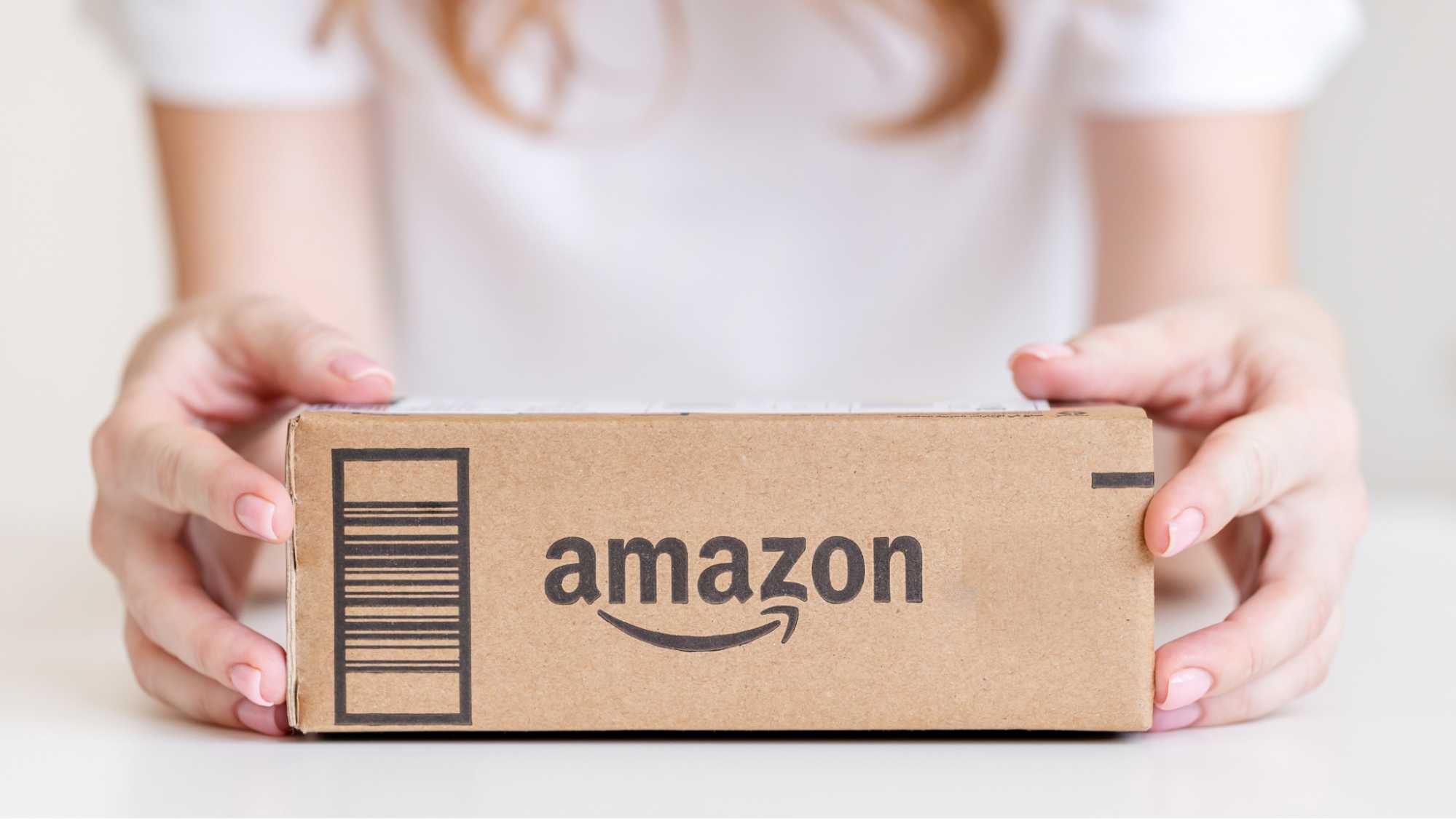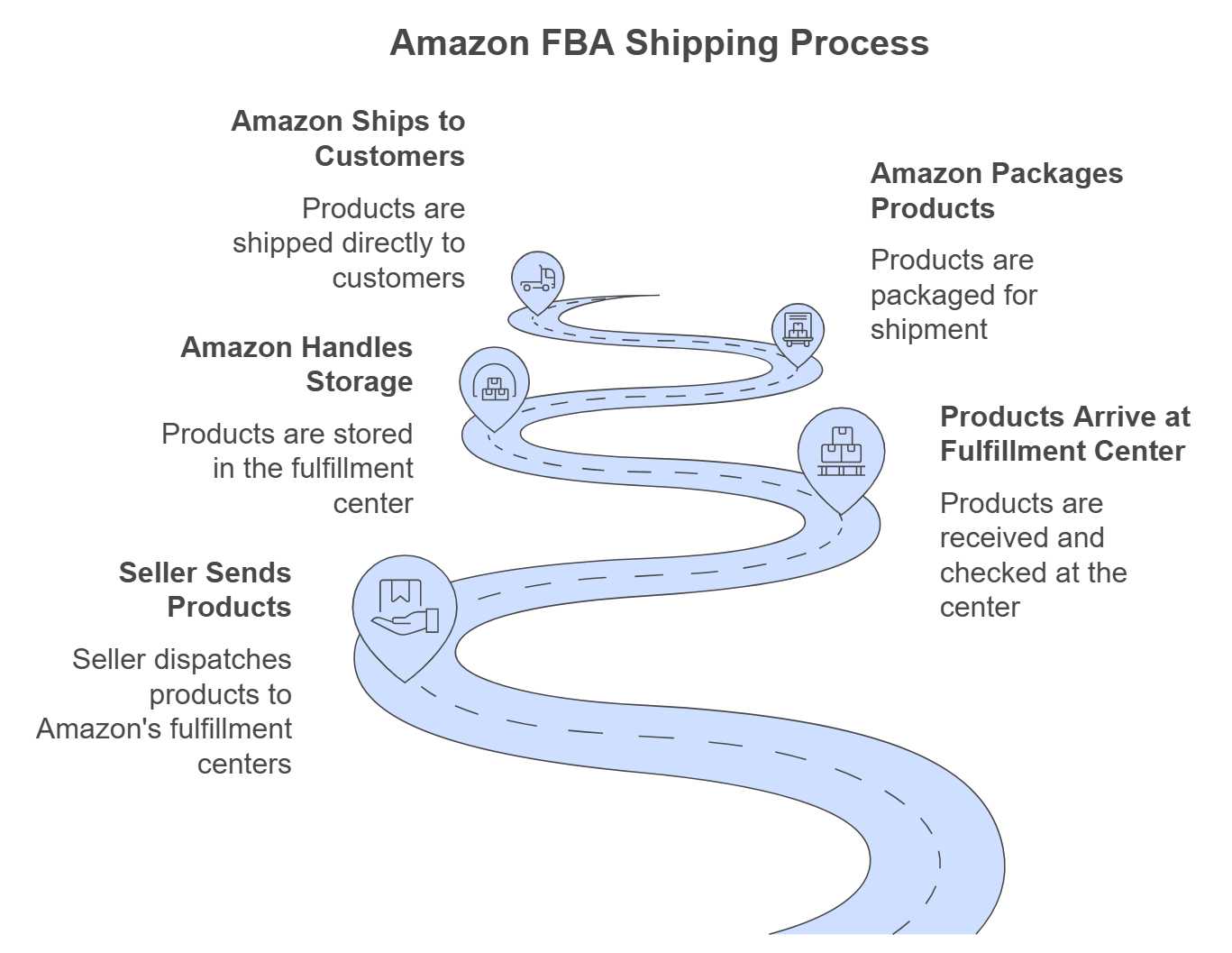MenuMenu
- Compare. Save. Ship.
- Main Menu
- How It Works?
- Shipping Services
- eCommerce
- Learn

Fulfillment by Amazon (FBA) is a service where sellers send their products to Amazon's fulfillment centers. Amazon then handles storage, packaging, shipping, customer service, and returns for these products. Amazon FBA Canada was first introduced in 2012. As of 2021, over 25,000 Canadian Amazon sellers utilized Amazon FBA, marking a growth of more than 20% from the previous year – but does that mean it’s worth it for your business?
Greg Woo, Director of Ship Expert, explains that “Amazon FBA helps Canadian sellers reach more customers and simplifies shipping. However, it comes with less control over customer relationships and branding. So, it’s important to weigh this convenience vs. potential discrepancies in your branding."
If you’ve decided that the benefits of selling through Amazon FBA are worth the potential risks, we’re here to help you get started. We’ll take a closer look at the Amazon FBA platform and discuss what Canadian businesses need to know about using it.
Sellers send their products to Amazon's Canadian fulfillment centers, where Amazon stores the inventory. When a customer places an order, Amazon handles the picking, packing, shipping, and customer service, including returns. This arrangement allows sellers to offer fast and reliable shipping, often with Prime eligibility.
Canadian sellers can ship their products directly to American Amazon FBA warehouses instead of Canadian warehouses if desired. Usually, sellers who make this choice do so to expedite delivery times to American customers.
However, there are pros and cons to using Amazon FBA Canada in this way
| Pros | Cons |
| Storing products in US warehouses enables quicker delivery to American customers | Managing stock across Canadian and American warehouses can complicate inventory tracking and forecasting. |
| Shipping in bulk to US FBA centers can reduce per-unit shipping costs compared to fulfilling individual cross-border orders. | If you need to make a return from the American warehouse, you may be subject to additional cross-border shipping costs. |
| Storing products in American FBA warehouses makes the products eligible for unique American-only Prime benefits. | Shipping products to American Amazon FBA warehouses requires compliance with specific labeling and packaging requirements, which differ slightly from Canadian FBA standards. |
Identify products with consistent demand and low to moderate competition in the marketplaces you wish to serve. Focus on items that align with consumer trends, have reasonable profit margins, and are suitable for shipping through FBA.
Note that Amazon does not accept all types of products for FBA. Certain products are restricted from sale or limited in their shipping options. Here is an overview.
Work with reliable suppliers who can consistently provide high-quality products that meet your target market's expectations. Evaluate suppliers based on their pricing, production capacity, and adherence to delivery schedules. Amazon will not take responsibility if you face a supplier issue unrelated to their services.
Verify that your products meet all regulatory requirements for the regions where you plan to sell. In Canada, this may include bilingual labeling, safety standards, and import/export compliance. For international sales, ensure you understand the regulations in each target country.
Design professional, detailed product listings to attract potential buyers. Include clear, high-resolution images that showcase your product’s key features. Write accurate descriptions and use relevant keywords to improve search visibility and convert clicks into sales.
Regularly monitor stock levels to ensure you can fulfill orders without interruptions while avoiding excessive storage fees. Use tools like Amazon’s inventory reports to analyze sales trends and predict restocking needs. Striking the right balance between inventory supply and demand will help maintain a smooth sales operation.nd strategies.

To begin, create a seller account on Amazon.ca. If you already operate on Amazon.com, you can link your accounts using your existing credentials. This step gives you access to Seller Central, where you can manage your business operations for FBA.
Add your products to the Amazon.ca marketplace and specify that you will use Fulfillment by Amazon (FBA). Specifying FBA on your products informs Amazon that it will handle your inventory and orders. The FBA label will not be visible to buyers, however, it will make your product eligible for other buyer-facing factors.
Your inventory must meet Amazon’s strict packaging and labeling requirements before shipping to their warehouses. These requirements include using scannable barcodes and secure packaging to protect products during handling and storage.
Create a shipping plan in Amazon Seller Central to specify the products, quantities, and destination warehouse. Use Amazon’s partnered carrier options or another reliable shipping provider to send your inventory to their fulfillment centers.
Using Amazon FBA in Canada includes several fees that sellers must manage. Amazon charges fulfillment fees per unit to cover picking, packing, shipping, customer service, and returns. These fees vary based on the product's size and weight.
Sellers also pay storage fees monthly, which depend on the inventory's volume in fulfillment centers, with higher rates for oversized items and during the peak season from October to December.
Amazon may also apply additional fees for unplanned services if inventory arrives unprepared. Unprepared inventory refers to products that do not meet Amazon's packaging, labeling, or preparation requirements. Examples include the following.
| Missing or Incorrect Labels | Products lacking scannable barcodes or with labels placed incorrectly. |
| Improper Packaging | Items not packaged according to Amazon's guidelines, such as missing polybags for leak-prone items or insufficient protection for fragile goods. |
| Non-Compliant Product Bundling | Multi-pack or bundled items not secured or labeled as a single unit. |
| Oversized or Incorrectly Boxed Items | Products exceeding size or weight limits, or shipments packed in a way that violates Amazon’s box requirements. |
In Amazon Seller Central, create a shipping plan by specifying the products you want to send, the quantities, and your preferred shipping methods. The system will generate instructions and assign the fulfillment center destination.
Every item must have a scannable barcode, such as UPC, EAN, or FNSKU, which uniquely identifies it in Amazon’s system. Follow Amazon’s labeling requirements to avoid delays or additional fees. If your items lack barcodes, you can generate FNSKU labels through Seller Central.
Proper packaging ensures that your products remain safe during shipping and storage. Use materials such as bubble wrap, polybags, or sturdy boxes to prevent damage. Amazon’s guidelines also specify packaging dimensions, weight limits, and rules for securing items.
Select a reliable carrier to transport your shipment to the designated Amazon fulfillment center. Amazon offers discounted rates through partnered carriers like UPS, which simplifies logistics and reduces costs. You can also use non-partner carriers, but ensure they provide tracking and delivery confirmation.
Once your shipment is ready, send it to the fulfillment center and track its progress. Use the tracking information provided by your carrier to monitor delivery and ensure it arrives on time. Address any issues promptly to prevent delays or disruptions to your inventory availability.
Now that you know how to use Amazon FBA in Canada, why not leverage key services that help make the whole process easier?
Ship Expert's in-house Amazon experts can help you optimize shipping times to meet Amazon's requirements. We collaborate with Amazon-approved carriers to ensure timely delivery to Amazon fulfillment centers. Plus, by leveraging volume discounts, we help businesses ship products to Amazon warehouses at reduced rates.

Director, Ship Expert
Greg Woo is a seasoned expert in the logistics and distribution industry, with a career spanning over two decades. He has a comprehensive understanding of shipping and distribution needs, and has extensive experience integrating with e-commerce stores as well as customer specific WMS (warehouse management systems) and ERP’s (enterprise resource planning software). His tenure in the industry and established courier and LTL partnerships have allowed clients to benefit from reduced shipping expenses, as well as improved operations through software and specialized integrations.
Greg is currently the Director at Ship Expert Inc., a role he has held since February 2015. Prior to his role at Ship Expert, Greg held significant positions at Juxto, a telecommunications and managed internet service provider.